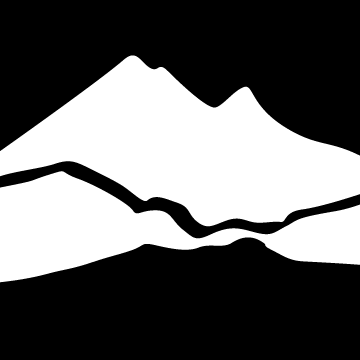Aquatic Science

Aquatic Science- AAS-T
It takes a highly trained professional to lead a team of technicians for aquatic research and conservation. A strong foundation in the core sciences for aquatic systems is necessary to apply the appropriate analytical skills to accomplish your research goals. Are you ready to be that team leader and launch your research career? If so, then the AAS-Transfer Degree in Aquatic Science is your first step on this new pathway.
This degree is designed for students who are interested in transferring to a partnering university to complete their bachelor’s degree. You will set yourself apart with the unique training skills only offered at BTC that you will carry into your rewarding career. BTC graduates can transfer up to 90 credits and then complete the upper-level courses required to qualify for more advanced positions.
Students in this degree will start their foundation in the core sciences while also receiving intensive hands-on experience working with aquatic organisms and ecosystems. Our program courses are offered in both in-person and online formats to increase availability for traveling to freshwater and marine field sites. At these sites, students will learn how to design surveys, operate sampling equipment, and prepare data for management goals.
This degree is all about flexibility and options. Students will work with academic advisors to create the right combination of general education and program courses for their career goals. Students may also extend their pathway at BTC and enroll in one of the advanced level certificates to increase their professional training for higher job placement.
Ready to take your aquatic career to the next level? Start your training at the award-winning and nationally recognized Fisheries and Aquaculture Sciences program at BTC.
Upon completion of this AAS-T degree, students will also receive the Fundamentals of Aquatic Science Certificate.
Employment Information
Data are provided on a program (not credential) level
71% BTC graduate placement rate1
$49,303 starting annual wage2
$56,597 average annual wage2
$66,348 potential annual wage2
Entry Information
When Can I Start?
This program typically starts in Fall, Winter and Spring quarters.
What are the Minimum Entry Requirements?
To get started or for help determining your English and math placement, contact the Outreach department at Outreach@btc.edu
What are My Next Steps?
Classes
Total Program Credits: 90
General Education Core Courses
CMST& 210 Interpersonal Communications 5 CR OR CMST& 220 Public Speaking 5 CR OR PSYC& 100 General Psychology 5 CR OR SOC& 101 Introduction to Sociology 5 CR ENGL& 101 English Composition I 5 CR OR Higher MATH& 107 Math in Society 5 CR OR Higher A 5-credit Gen Ed/Transfer Course used to fulfill the General Education course requirements may not be also used for an elective requirement. TOTAL General Education Core Course Credits 20 CR Core Courses for Program
AQUA 101 Introduction to Applied Sciences 2 CR AQUA 111 Applied Techniques: Fall 3 CR AQUA 112 Applied Techniques: Winter 1 CR AQUA 113 Applied Techniques: Spring 2 CR AQUA 121 Principles of Aquaculture 5 CR AQUA 122 Principles of Fisheries Science 5 CR AQUA 131 Aquatic Chemistry with Lab 5 CR AQUA 141 Research Methods 3 CR ENVS& 101 Fundamentals of Environmental Science 5 CR OCEA& 101 Introduction to Oceanography with Lab 5 CR TOTAL Core Courses for Program Credits 36 CR Program Specialty
Any AQUA specialty courses used to fulfill the specialty courses requirement may not also be used for an elective requirement. Program Specialty: Transfer Track (Select two classes from the list below.) AQUA 243 Fisheries Ecology with Lab 5 CR AQUA 251 Fisheries Conservation 5 CR AQUA 271 Data Analysis for Aquatic Sciences 5 CR AQUA 272 Introduction to GIS 5 CR AQUA 273 Animal Genetics with Lab 5 CR AQUA 274 Organismal Biology with Lab 5 CR Any AQUA specialty courses used to fulfill the specialty courses requirement may not be also used for an elective requirement. TOTAL Program Specialty Course Credits 10 CR Electives
Any combination of AQUA courses and 5-credit transfer courses may be used to fulfill the elective requirements, as long as those courses are not being applied to meet any other listed requirements. 24 CR
Program Outcomes
Students who successfully complete the AAS-T degree in Fisheries & Aquaculture Sciences, will be able to:
- Demonstrate competency in hatchery methods and apply appropriate techniques to spawn, incubate, rear and release fish.
- Utilize proper tools, equipment and protective devices to safeguard against injury to self, others and workplace facilities.
- Act responsibly and ethically as an employee by being punctual, adhering to company policies and interacting positively and appropriately with co-workers and supervisors.
- Receive, interpret, and convey written, verbal, and graphic information to communicate effectively with co-workers, management and general public.
- Compute, calculate, and convert standard and metric measurements for purposes of disease treatment and prevention, and rearing of fish.
- Observe and comply with environmental laws and regulations related to rearing of fish and the use and disposal of chemicals and drugs.
- Use current and emerging computerized systems or software to operate equipment, calculate results, keep records, and enter data on proper forms and records.
- Identify resources to stay current with new and emerging equipment and techniques.
Employment Outlook
Fisheries & Aquaculture Sciences AAS-T graduates may either transfer directly to a partnering institution to complete their bachelor’s degree, or enter the workforce and complete their bachelor’s degree at a later time. Graduates qualify for Hatchery Specialist 2 and Scientific Technician 2 positions with Washington Department of Fish and Wildlife, Biological Technician GS 4 positions with the federal government, and employment in tribal government, private, and nonprofit sectors.
The average annual wage in this field is $45,521, with an earning potential of about $57,231 per year.*
Program graduates work as fish hatchery specialists, fish culturists, fisheries technicians, shellfish hatchery workers, and scientific aides.
Faculty & Support

Brittany Palm
Fisheries & Aquaculture Sciences
Sara Smith
Fisheries & Aquaculture Sciences
Kai Rick
Hatchery Operations Specialist
Steeve Pomerleau
Fisheries & Aquaculture
Kai Rick
Hatchery Operations Specialist
Steeve Pomerleau
Fisheries & AquacultureContacts
If you have questions about this program or want help with the admissions steps to Bellingham Technical College, please email outreach@btc.edu.
Current students wanting academic planning and support, can connect with the program Instructor(s) or email FisheriesNav@btc.edu
